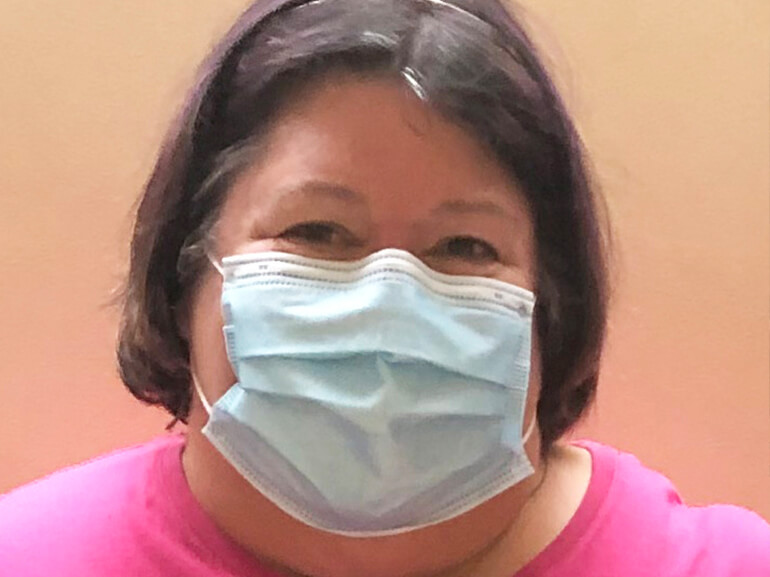Susan's story

As a certified nursing assistant (CNA) at Helen M. Simpson Rehabilitation Hospital, Susan Stoke interacted with patients on every shift, but she never imagined she’d soon become one of them.
It all started in July. Susan, 62, was enjoying her summer, which included spending time grooming and riding her horse. She began to experience progressive weakness starting with her lower extremities and then spreading to her upper extremities. After sustaining multiple falls at home, Susan knew she couldn’t wait any longer for a neurology appointment so she went to the emergency room at UPMC Pinnacle Harrisburg.
After running tests, doctors diagnosed her with severe spinal stenosis and cord compression at the cervical and thoracic levels. She underwent two different surgeries to help address the issues.
Facing an extended post-surgery recovery, she knew exactly where to go — Helen M. Simpson Rehabilitation Hospital. "I wouldn't go anywhere else because I work here and I know without a doubt that the therapy is phenomenal,” Susan said. “I knew I would get excellent care and treatment here from all staff."
When Susan first arrived, she was unable to walk or navigate stairs. She had also become progressively more dependent for her daily living and self-care activities and was considered a high risk for falling. That’s when her care team, and fellow coworkers, put a plan in place to help Susan achieve her goals of regaining her independence, returning to work and getting back on the saddle.
In occupational therapy, Susan focused on her activities of daily living tasks such as dressing, grooming and bathing. Her therapists also worked on helping her transfer from one surface to another, such as bed to chair, as well as increasing balance for standing. Arm exercises also helped Susan strengthen the muscles she would need for reaching using assistive devices for walking and transfers. These sessions also included learning to use long handled shoe horns and a reacher which helped Susan dress independently while placing less strain on her spine.
Susan’s physical therapists worked on getting her walking again. They focused on strengthening core and leg muscles to assist in transfers and walking while maintaining spinal precautions. Initially, Susan was in a great deal of pain, so these sessions were slow, working to control her pain while increasing her tolerance for mobility. In time, Susan was able to take a few steps with her therapist following closely behind with a wheelchair for frequent resting moments. They also worked on strengthening Susan’s legs as she was putting one foot directly in front of the other, causing her to lean back on her hips for support. Initially, she required a rolling walker but as she rebuilt strength, she progressed to a rollator.
There was a day in physical therapy where everything seemed to “click” for Susan. “It was about five days prior to my discharge, and my therapist instructed me to go up the stairs sideways as a way to problem solve only having one railing at home,” said Susan. “I was able to do it when I really didn't think I could. In the same session, I walked outside over loose gravel and grassy surfaces with a walker and didn't lose my balance. Finally, I was able to stand up without using my hands to push up, and that was monumental for me."
After 17 days, Susan was was able to walk independently using the rollator. She was also able to do a full flight of stairs with a single handrail as well as go up and down curb steps. These movements were essential in preparing to return to her community.
Upon discharge, Susan stayed with family until she was ready to return home and get back to full independent living.
Susan shared, “Get help for yourself right away when you think something is wrong. There are people who are skilled and can help you before it's too late.”